The Skillful Craftsmen in Lingnan · The Guardians of Ancient Buildings | Tiler: A Life Involving Tile Eaves
坊间称他们为“泥水佬”,他们的正名是“瓦匠”。
They are called “masons” in the streets but their proper name is “tiler”.
一砖一瓦,经过他们的巧手修补,重新复原了中国古建筑的“天际线”。屋顶盖瓦、墙体砌砖、方砖墁地,这些传统营造技艺看似简单,却蕴含着与时间对抗的力量,才能让古建筑历经风雨屹立不倒。
The “skyline” of ancient Chinese buildings are restored out of their hands, brick by brick and tile by tile. These traditional construction techniques, the tiled roof, the brick-laid wall and the square brick-plastered floor, may seem simple but contain the power against time and keep ancient buildings standing tall in spite of wind and rain.
瓦作,古建筑行业的“八大作”之一,而瓦匠就是一群普通又不平凡的人。
Tile work is one of the eight major works concerning the ancient building construction. Tiles serve as a group of common but extraordinary laborers.
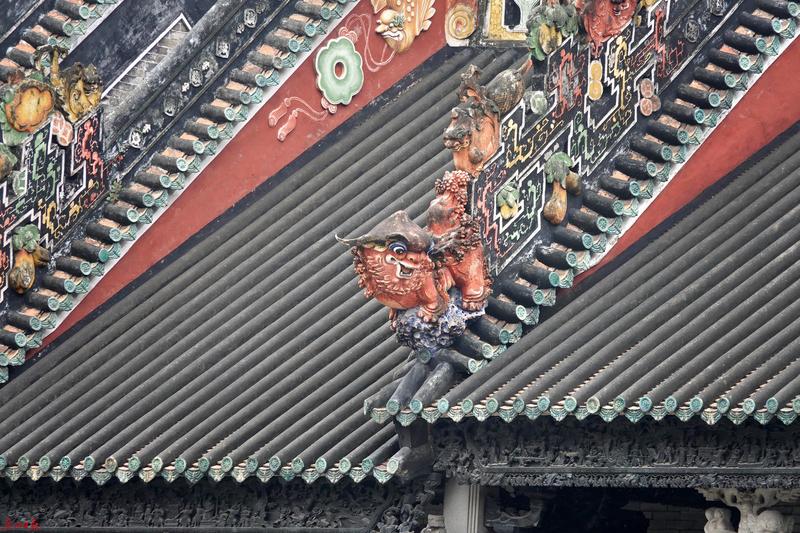
在广州黄埔沙步古建筑群的修复现场,65岁的瓦匠陈北海跨着马步,半蹲在屋顶专心致志修复瓦面。旧时,这一带的大户人家建造了一批私塾或书室建筑供后代读书。时光摧折,建筑易老,正面迎袭日晒雨淋的屋顶是破损较重的部分,急需匠人的“妙手回春”。
On the restoration site at the Shabu ancient building complex of Huangpu, Guangzhou, Chen Beihai, a 65-year-old tiler, is focusing on repairing the tile roof by halfway squatting on it. During the old days, those wealthy and influential families herein built a batch of private schools and studies for their descendants. However, as the time goes by, those buildings get old and impaired. Their roofs, exposed to both sun and rain in the front, are heavily damaged so there is an urgent need for artisans’ “working miracles”.
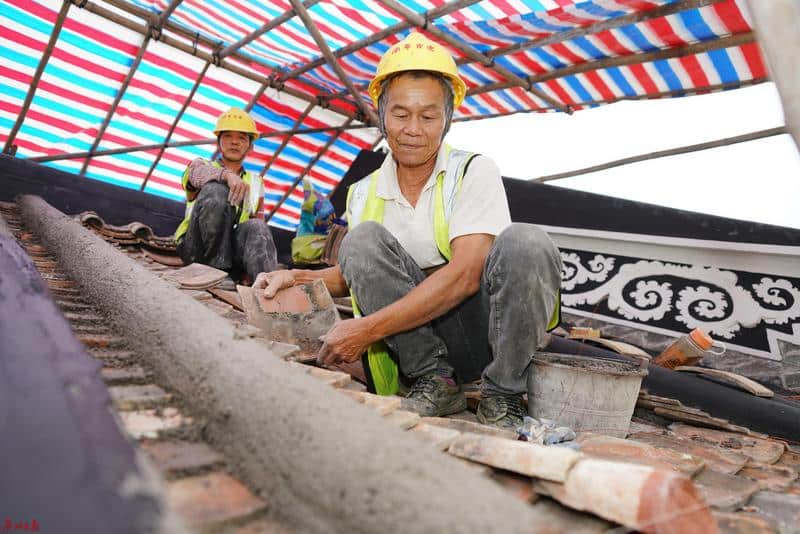
手持数张瓦片,陈北海像垒积木一样,一层层叠着摁上去,没一会工夫就铺完了一坑。整个过程一气呵成,没有“八大作”中的彩画作那般绚丽炫技,也不似木作打造榫卯结构那般富有巧思,瓦作的特性在陈北海沉默而迅速的动作中生动起来,如此基础扎实,如此端方周正。
Holding multiple tiles, Mr. Chen pressed them layer by layer on the roof, just like playing building blocks. He accomplished a row in a short while. The entire process has completed at one stretch. It is not as gorgeous as the color painting work among the “Eight Major Works” nor as ingenious as the carpenters’ creating mortise and tenon structure. The characteristics of tile work come alive in Mr. Chen’s quiet but swift movements, which are so solid and upright.
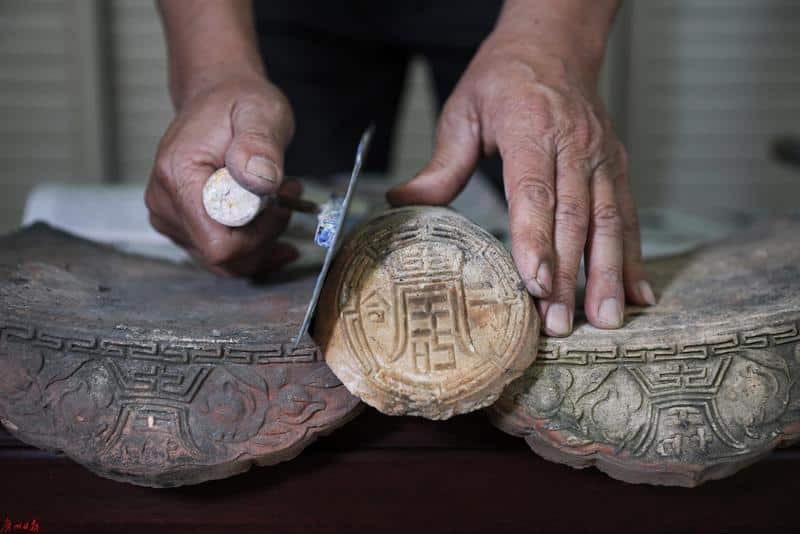
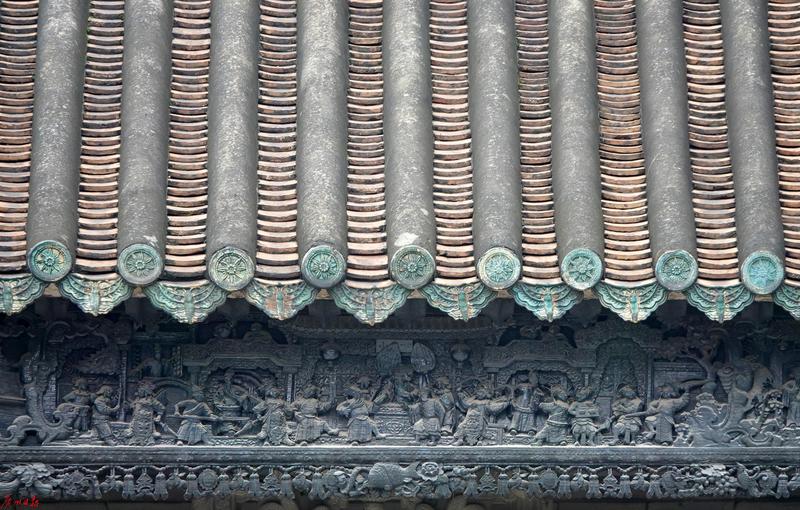
来自番禺沙湾的广东传统建筑名匠黄群庆有个“看家武器”,就是长年在全国各地收购的老瓦,找出同色系、同规格的瓦片,便可以替换掉古建筑上破损的部分。至于松散剥落的秆筋灰,清理干净淋湿润,自行调出同样色块的灰进行修复。
Huang Qunqing, a famous architectural craftsman from Shawan of Panyu, engages in the traditional Cantonese architecture. He possesses a kind of “magic wand”, which are the old tiles he has collected nationwide for years. By finding the tiles in the same color scheme and size, Mr. Huang can replace the damaged parts in an old building with intact ones. As for the unconsolidated straw-reinforced mortar flakes, Mr. Huang can also screen and wet them, and then mix out the mortar in the same color for repair.
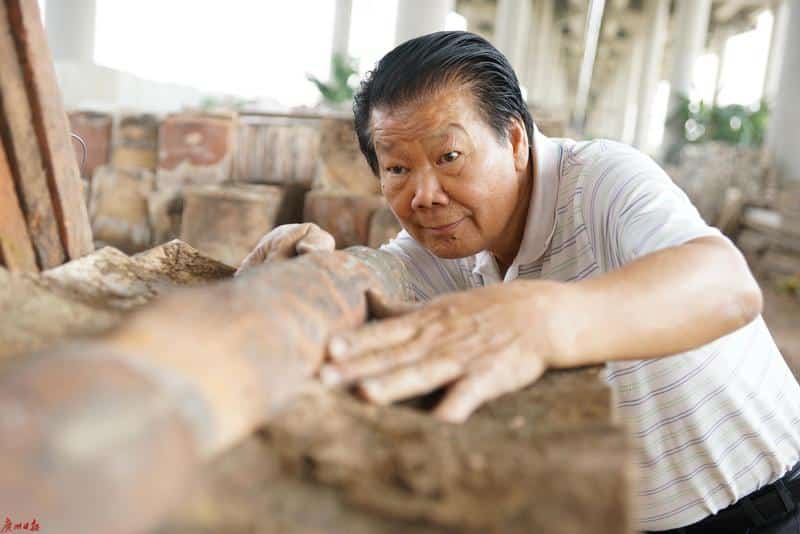
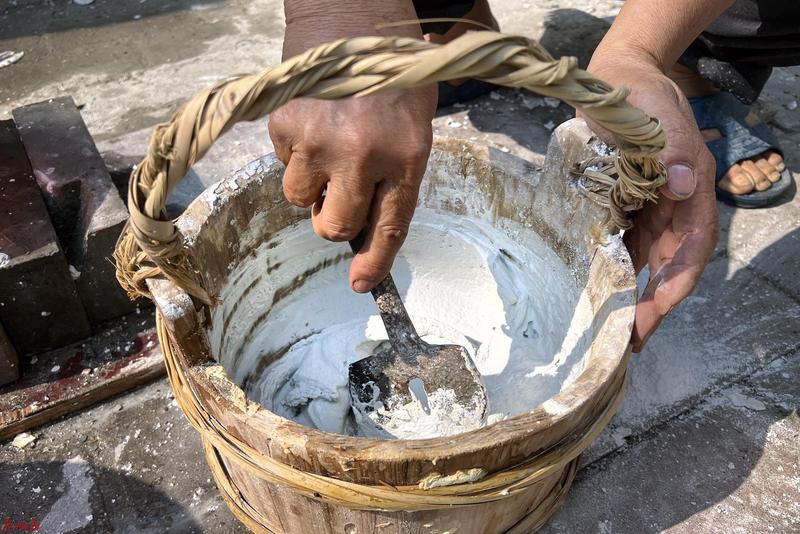

黄群庆15岁入行,因为太爷爷那辈做建筑起家,帮人修建祠堂,“父传子、子传孙”,这个工匠世家的后代几乎都与建筑打交道。
Mr. Huang engaged in this business at 15 years old since his great grandfather made his fortune as a construction worker and helped people build ancestral temples. From his grandfather to his father and himself, almost all of the descendants of this artisan family have engaged in architecture.
盖瓦的时候,瓦匠的手不停地与砂浆打交道,还要调“白灰水”浸泡禾秆草做成纸筋灰,这些都带有一定腐蚀性,手部很快就干燥开裂。那时还没有戴手套一说,因为会影响手部的触感,无法感知每一块砖的温度与棱角。青砖怕干燥,一定要湿润着砌才黏得够牢固。
When paving tiles, tilers need to not only keep working with the mortar but also mix “lime water” to soak straws for straw-reinforced mortar. Those processes are so corrosive that their hands can get dry and chapped quickly. In the past, there was no such thing as wearing gloves because they impacted the touch feeling of hands and the perception of temperatures, edges and corners of each brick. Blue bricks can’t be used for wall building unless they are wet. Otherwise, masonry structure cannot stick together firmly enough.
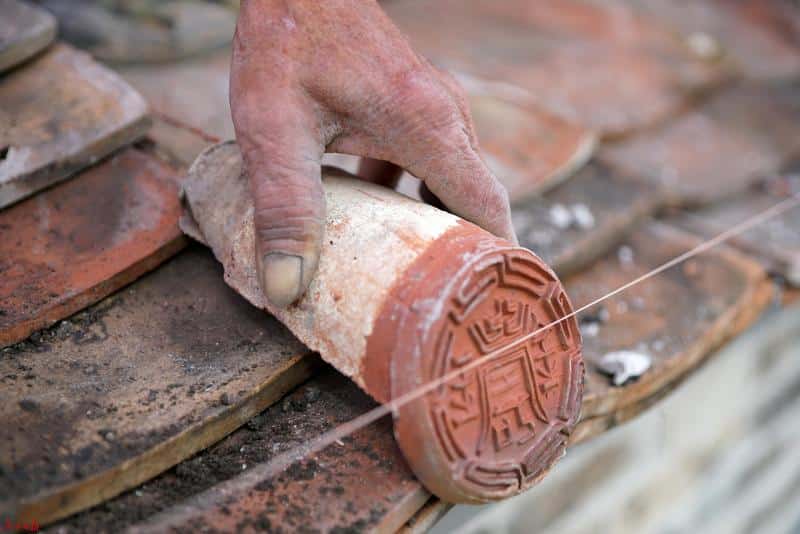
对此,黄群庆自有妙招。他忙完一天后就洗澡,搓干净手指里的灰,此刻裂纹会爆得更厉害,这时就咬牙用双手拼命在水泥地上硬搓,甚至用硬瓦片去硬磨,直到手上温度上升,感知不到痛了,再找花生油来抹一遍。不日就练成“铜皮铁骨”。
As for this issue, Mr. Huang has a trick up his sleeve. After a day’s hard work, he will take a bath and rubbed the ashes out of his fingers. At this moment, the chapped skin will go worse. Then, Mr. Huang will clench his teeth and rub hard his hands on the cement floor or even on hard tiles until his hands get warm and cannot feel the pain. Next, he will apply peanut oil on them. In a few days, he can work out a “bronze skin and iron palm”.
瓦匠不仅要忍受暴晒,还要以弯曲的姿势高空作业。屋顶都是斜坡面,不可能舒舒服服坐着或站着工作,要么踩着脚手架在上空疾走如飞,要么蹲着、跨着甚至趴着干活。
Tilers not only have to endure the sun exposure but also work at height in an uncomfortable posture. Roofs are slopes so it’s impossible for tilers to easily sit down or stand for work. Instead, they either move fast on scaffolds, or squat, astride or even lie on their stomach on roofs for work.
“我们这批老匠人,都是子承父业或者是‘小工’刚入行,后来才琢磨上古建筑修缮这个方向,像海绵吸水一样不断学习。”黄群庆说。近年来,社会越来越重视历史建筑保护,大量民间的古民居、祠堂、庙宇被列入了修缮序列,无论是职业地位的提升,还是修缮费用的提高,都在无形中增加了行业的吸引力。
“We are a group of old artisans who inherited the skills from our fathers or started from “assistant workers”. Only later, did we begin to work toward the direction of ancient building renovation. We just keep learning like a sponge absorbing water.” Huang Qunqing said. In recent years, as the society pays increasing attention to historical building protection, a great number of ancient residential buildings, ancestral halls and temples have been included on the repair list. Both the rising status of this occupation and the increasing repair cost have strengthened the industry attractiveness.
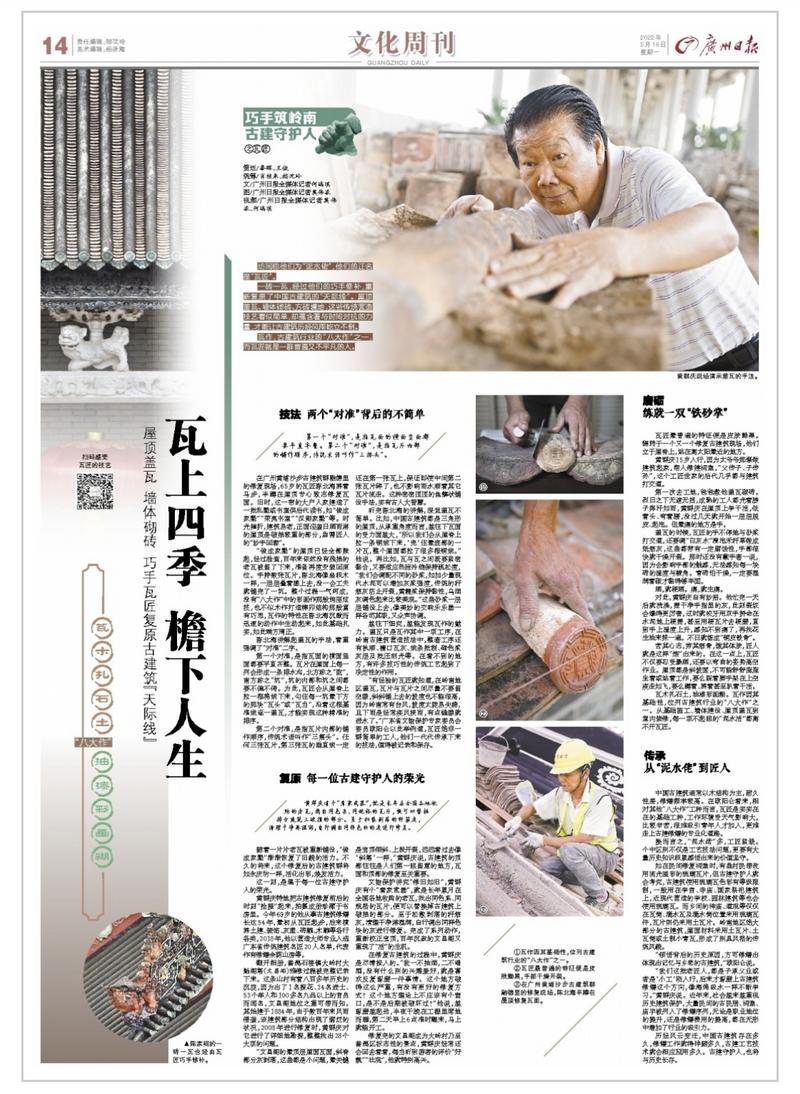
来源:广州日报
Source: Guangzhou Daily
统筹/秦晖 肖桂来
Report planning: Qin Hui and Xiao Guilai
作者:何瑞琪、莫伟浓
Author:He Ruiqi and Mo Weinong











